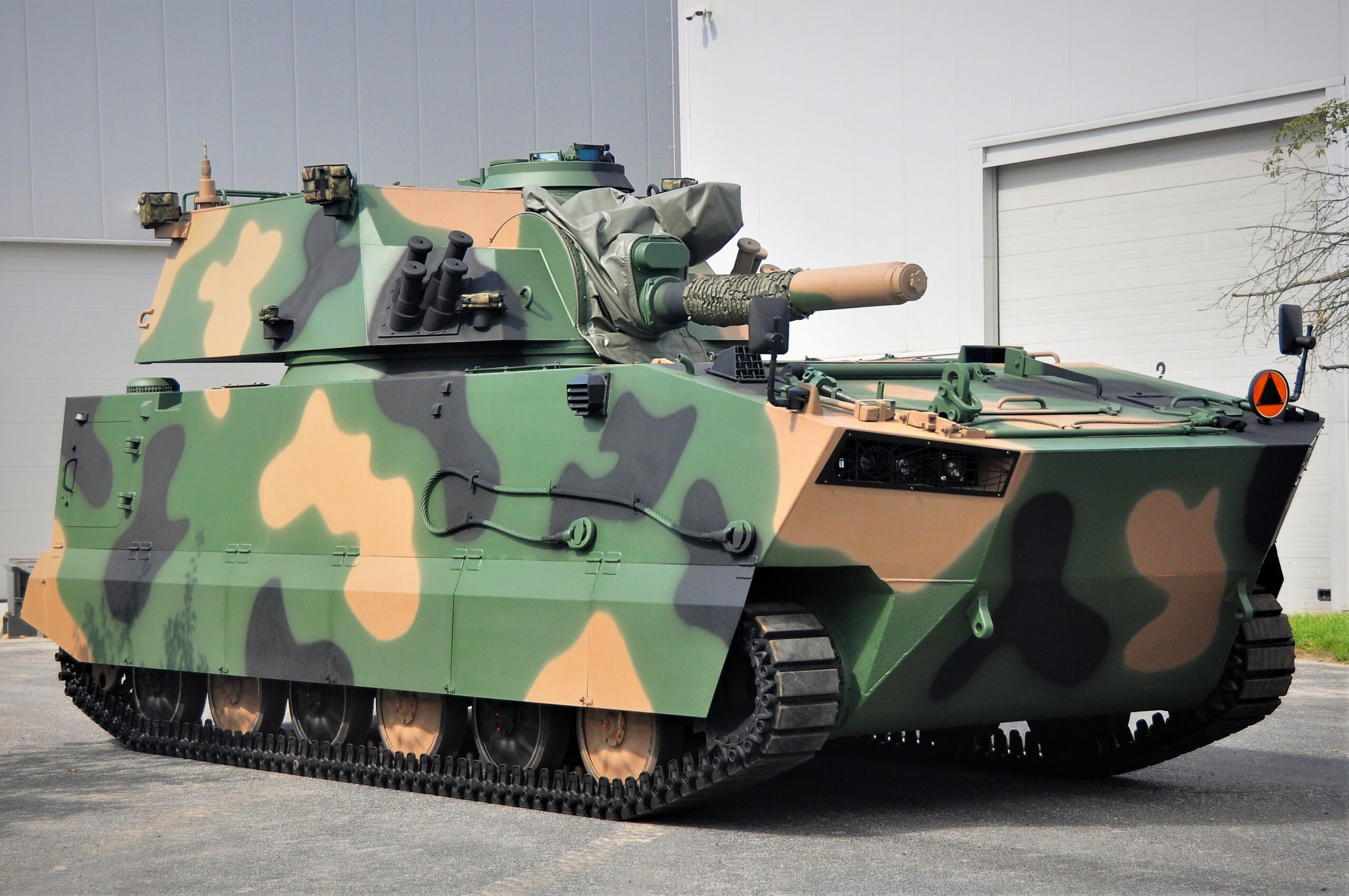
Poland’s M120G self-propelled mortar has a new chassis. (HSW)
WARSAW: Polish defense firm Huta Stalowa Wola (HSW) has revealed a new version of the M120G Rak self-propelled mortar, featuring a new modified light tracked chassis, one developed, designed, and manufactured by the company.
Expected to be the final update on the M120G design, the newest vehicle has a different shape of the front armor plates, new headlight assemblies similar to those on the Borsuk New Fighting Swimming Infantry Vehicle, and the hull sides protected with new ballistic panels. But the most important element is a new chassis, with a modern hydropneumatic suspension and six, rather than seven, pairs of wheels.
The new chassis provides a much higher level of anti-mine and ballistic protection than the old one, providing crew and vehicle safety as well as better performance and crew comfort, the company says, because vibrations and shocks while driving in difficult terrain have been reduced. And last but not least, it is more effective in suppressing oscillation after each shot, possibly increasing the M120G rate of fire, from the current 8–10 to 12–13 rounds per minute.
The M120G is armed with a M120 mortar and 7.62mm UKM 2000D MG, with the Bazalt day-night aiming sight. The vehicle turret also features eight 81 mm smoke grenade launchers and OBRA-3 SSP-1 laser warning system.
While the Polish military is the primary customer, HSW does have its eye on the international market. Company executives believe there is potential to sell several dozen of the systems abroad, and are in “advanced” negotiations with at least one nation that they declined to identify.
RELATED: Likely Base For Second Polish F-35 Squadron Identified
When the M120G project was started in 2009, a decision was made to reuse the chassis of the 122m Goździk howitzer as a way to speed the project along. However, the goal was always to eventually replace the chassis with a more advanced construction. An attempt was made in 2013 to use the Marder IFV’s chassis, but that effort never materialized.
The new vehicle fits within the Polish Land Forces’ concept of modular design for artillery systems, which seeks to have as many common parts as possible across the service inventory. assuming the maximum unification of equipment with the implementing of existing solutions. The new chassis can be used also by other vehicles that make up the KMO (Kompanijny Moduł Ogniowy — the fire module at the company level), including the Rak tracked variant C2 and reconnaissance vehicles, as well Regina C2 vehicles, currently delivered on the same upgraded Goździk chassis; on paper at least, the chassis could also be used to develop a tracked version of the tank destroyer or the scattered mining system, ambulance or an armed recovery vehicle.
Poland has eight KMOs worth of the Rak in its inventory, including 64 M120K self-propelled mortars and 32 AWDs (Artyleryjski Wóz Dowodzenia — artillery command vehicle). In Oct. 2019, the MoD’s armaments inspectorate signed a contract for two KMO Rak (16 M120K mortars and 8 AWD) frontline units and two mortars for training at the artillery and armament training center in Toruń.
In May 2020, the MoD signed a contract for the delivery of another five KMO Rak (40 RAK mortars and 20 AWD). The last contract came in May 2021, covering delivery of 21 artillery ammunition carriers, and seven artillery weapon repair vehicles.






















